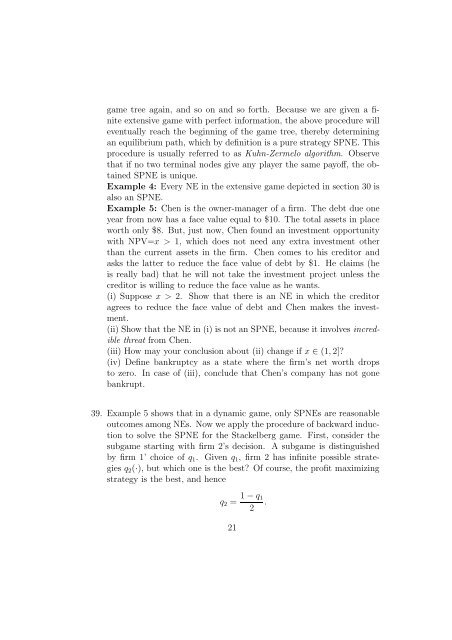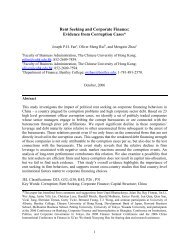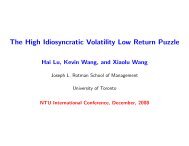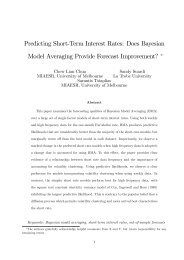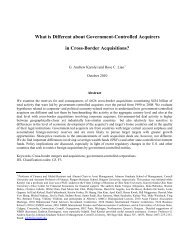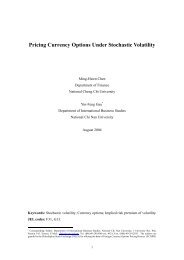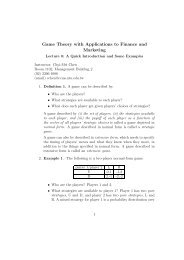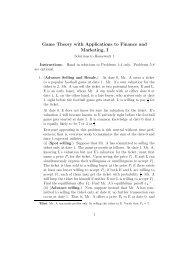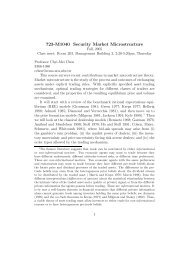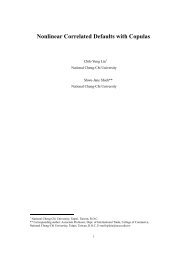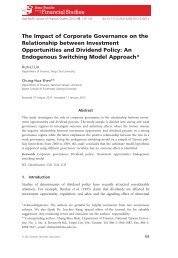Game Theory with Applications to Finance and Marketing
Game Theory with Applications to Finance and Marketing
Game Theory with Applications to Finance and Marketing
You also want an ePaper? Increase the reach of your titles
YUMPU automatically turns print PDFs into web optimized ePapers that Google loves.
game tree again, <strong>and</strong> so on <strong>and</strong> so forth. Because we are given a finiteextensive game <strong>with</strong> perfect information, the above procedure willeventually reach the beginning of the game tree, thereby determiningan equilibrium path, which by definition is a pure strategy SPNE. Thisprocedure is usually referred <strong>to</strong> as Kuhn-Zermelo algorithm. Observethat if no two terminal nodes give any player the same payoff, the obtainedSPNE is unique.Example 4: Every NE in the extensive game depicted in section 30 isalso an SPNE.Example 5: Chen is the owner-manager of a firm. The debt due oneyear from now has a face value equal <strong>to</strong> $10. The <strong>to</strong>tal assets in placeworth only $8. But, just now, Chen found an investment opportunity<strong>with</strong> NPV=x > 1, which does not need any extra investment otherthan the current assets in the firm. Chen comes <strong>to</strong> his credi<strong>to</strong>r <strong>and</strong>asks the latter <strong>to</strong> reduce the face value of debt by $1. He claims (heis really bad) that he will not take the investment project unless thecredi<strong>to</strong>r is willing <strong>to</strong> reduce the face value as he wants.(i) Suppose x > 2. Show that there is an NE in which the credi<strong>to</strong>ragrees <strong>to</strong> reduce the face value of debt <strong>and</strong> Chen makes the investment.(ii) Show that the NE in (i) is not an SPNE, because it involves incrediblethreat from Chen.(iii) How may your conclusion about (ii) change if x ∈ (1, 2]?(iv) Define bankruptcy as a state where the firm’s net worth drops<strong>to</strong> zero. In case of (iii), conclude that Chen’s company has not gonebankrupt.39. Example 5 shows that in a dynamic game, only SPNEs are reasonableoutcomes among NEs. Now we apply the procedure of backward induction<strong>to</strong> solve the SPNE for the Stackelberg game. First, consider thesubgame starting <strong>with</strong> firm 2’s decision. A subgame is distinguishedby firm 1’ choice of q 1 . Given q 1 , firm 2 has infinite possible strategiesq 2 (·), but which one is the best? Of course, the profit maximizingstrategy is the best, <strong>and</strong> henceq 2 = 1 − q 1.221


